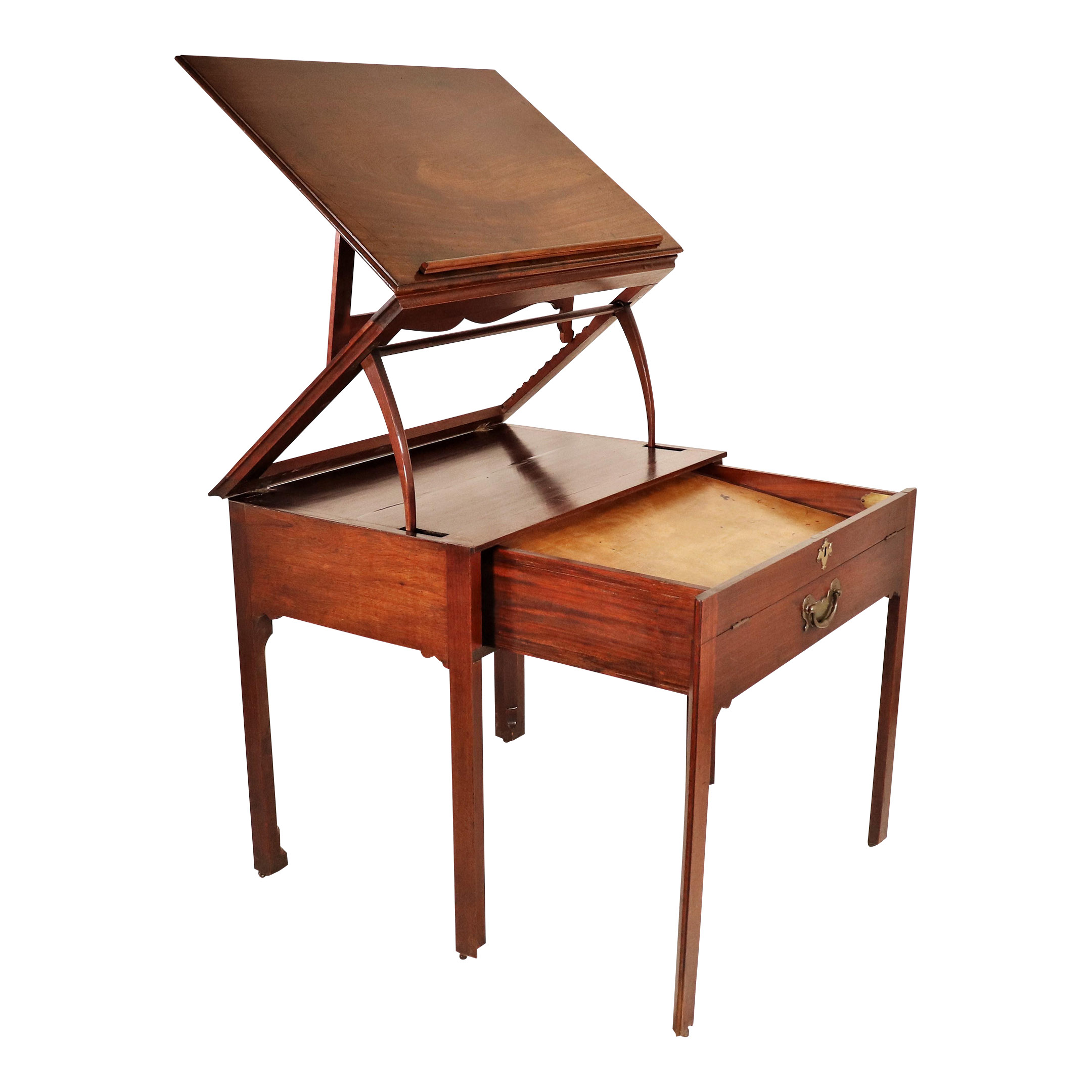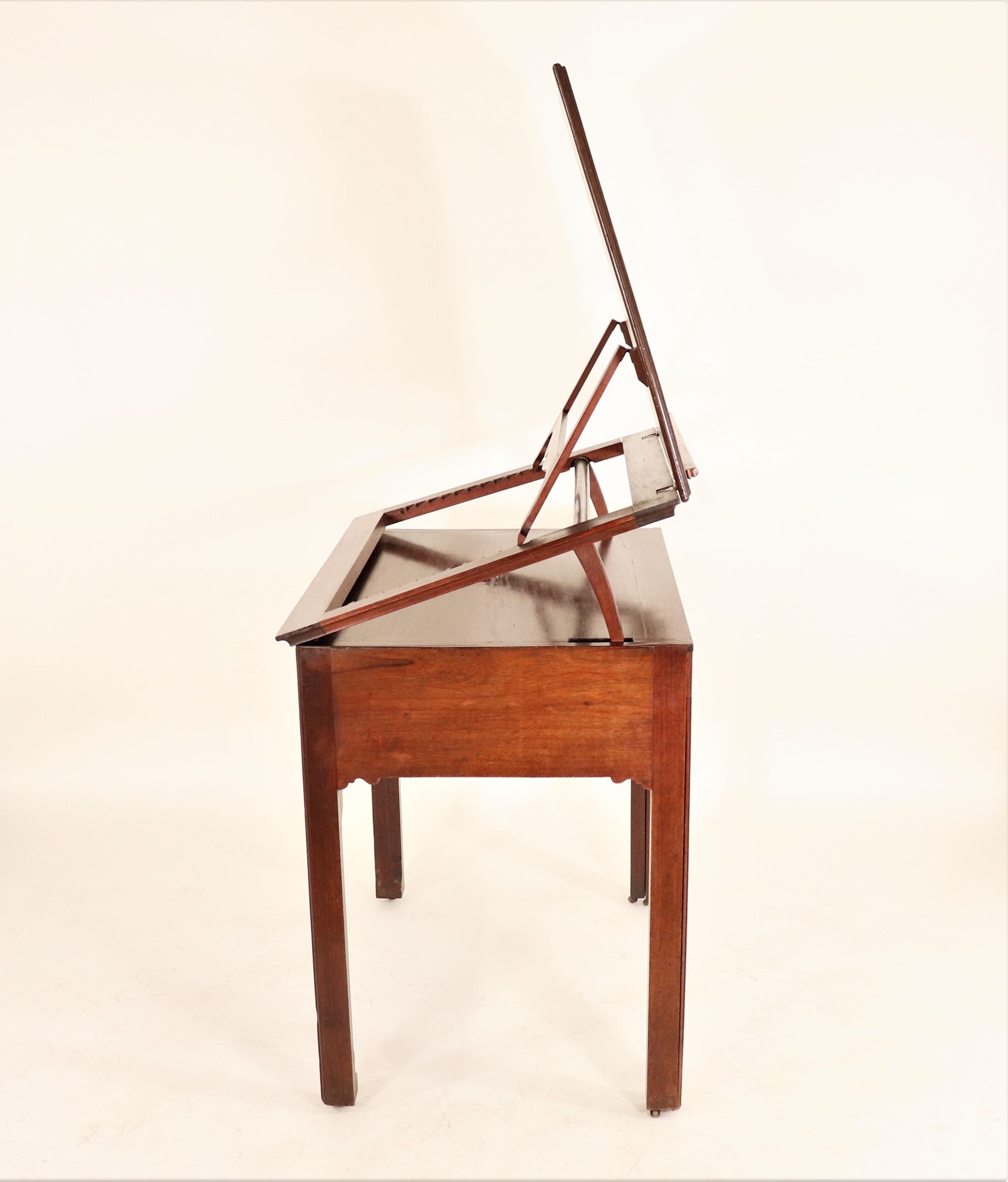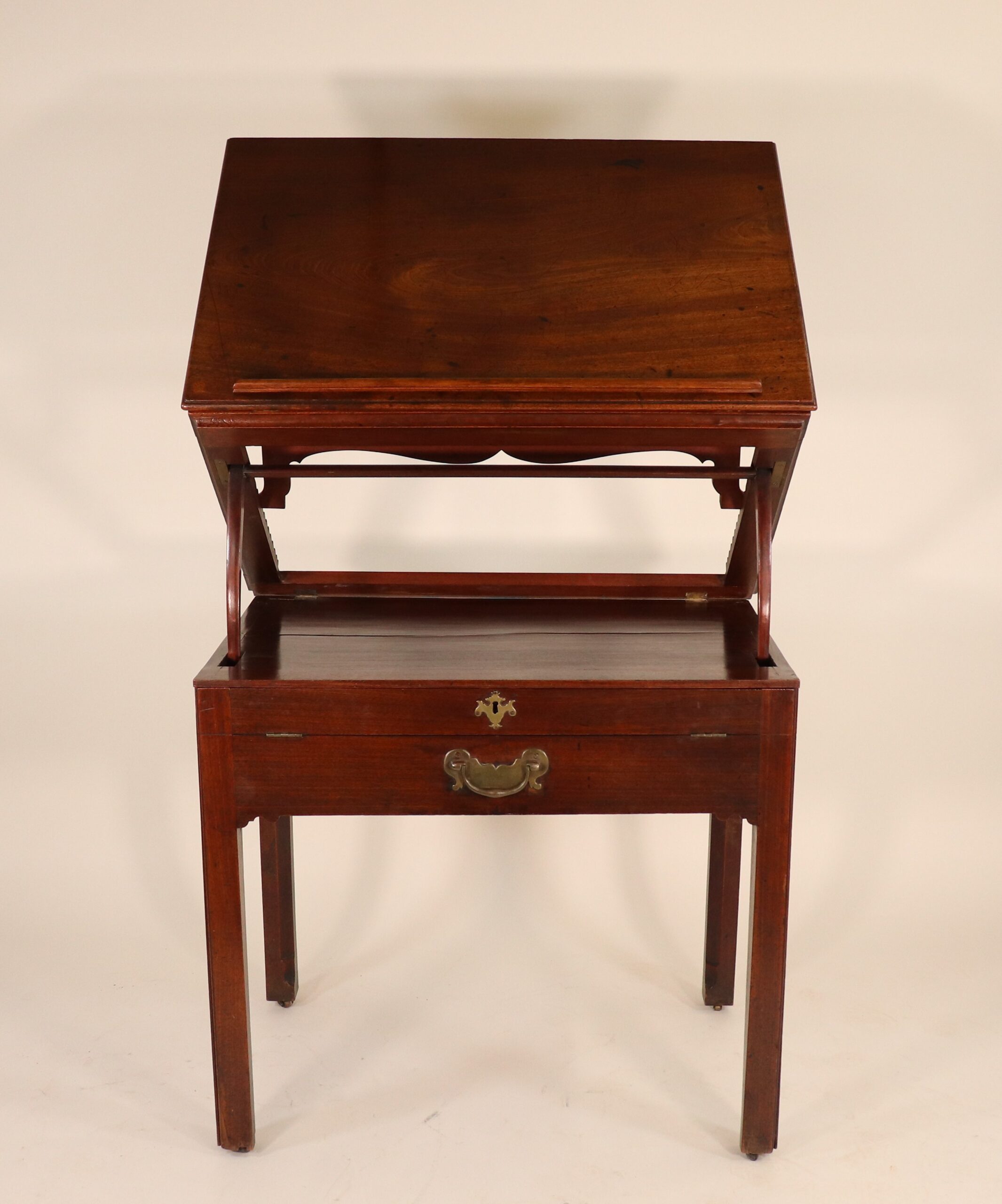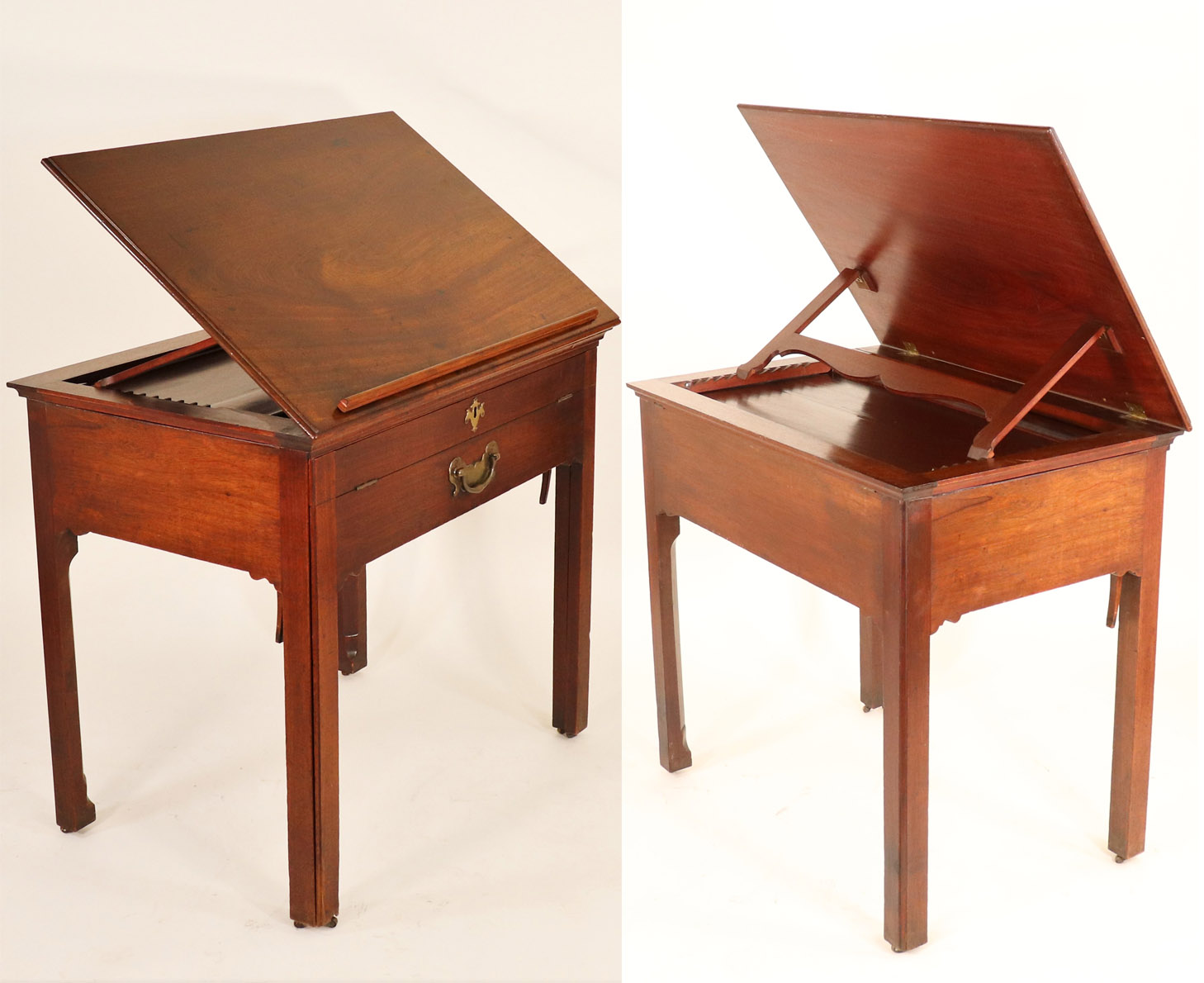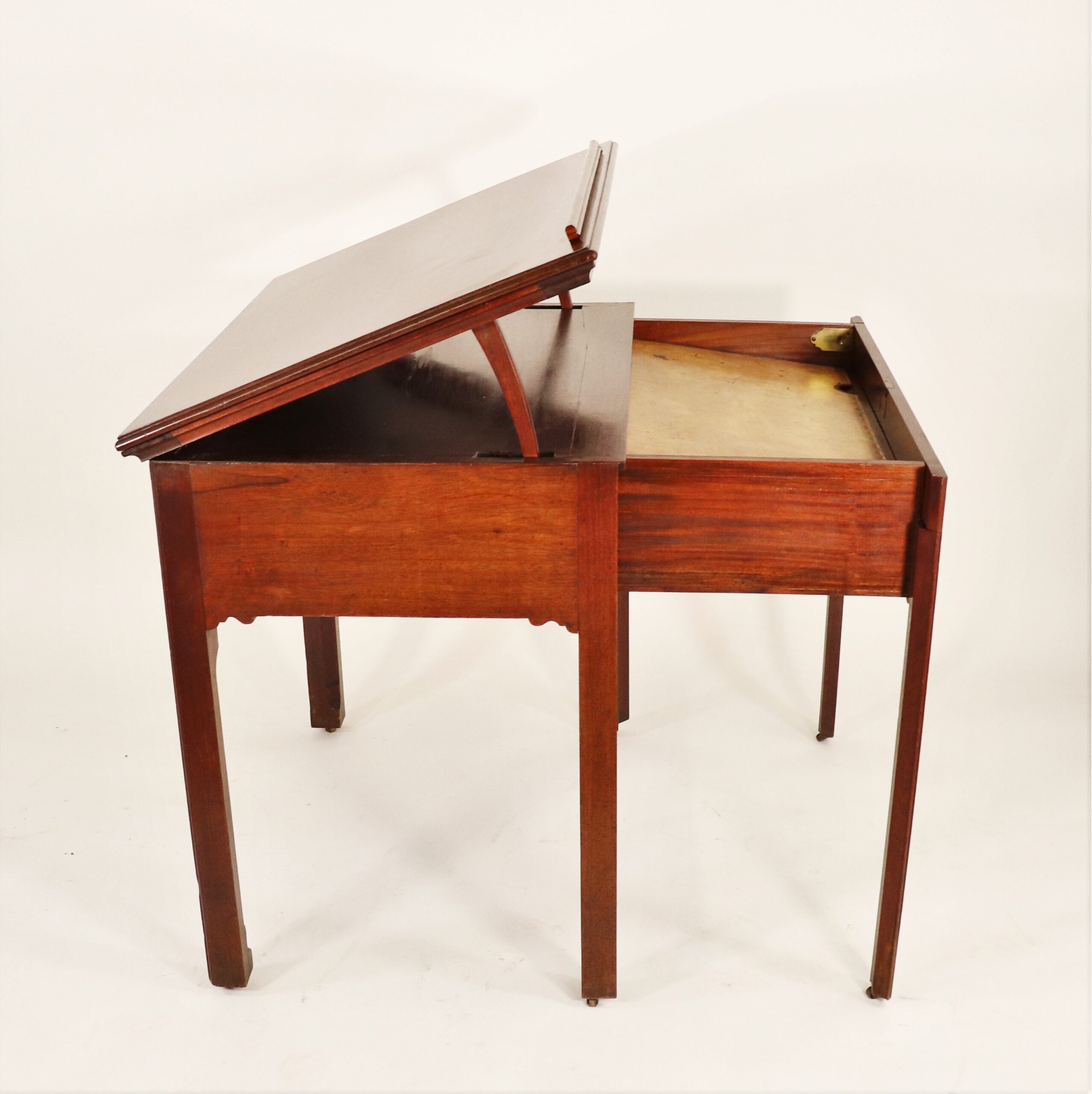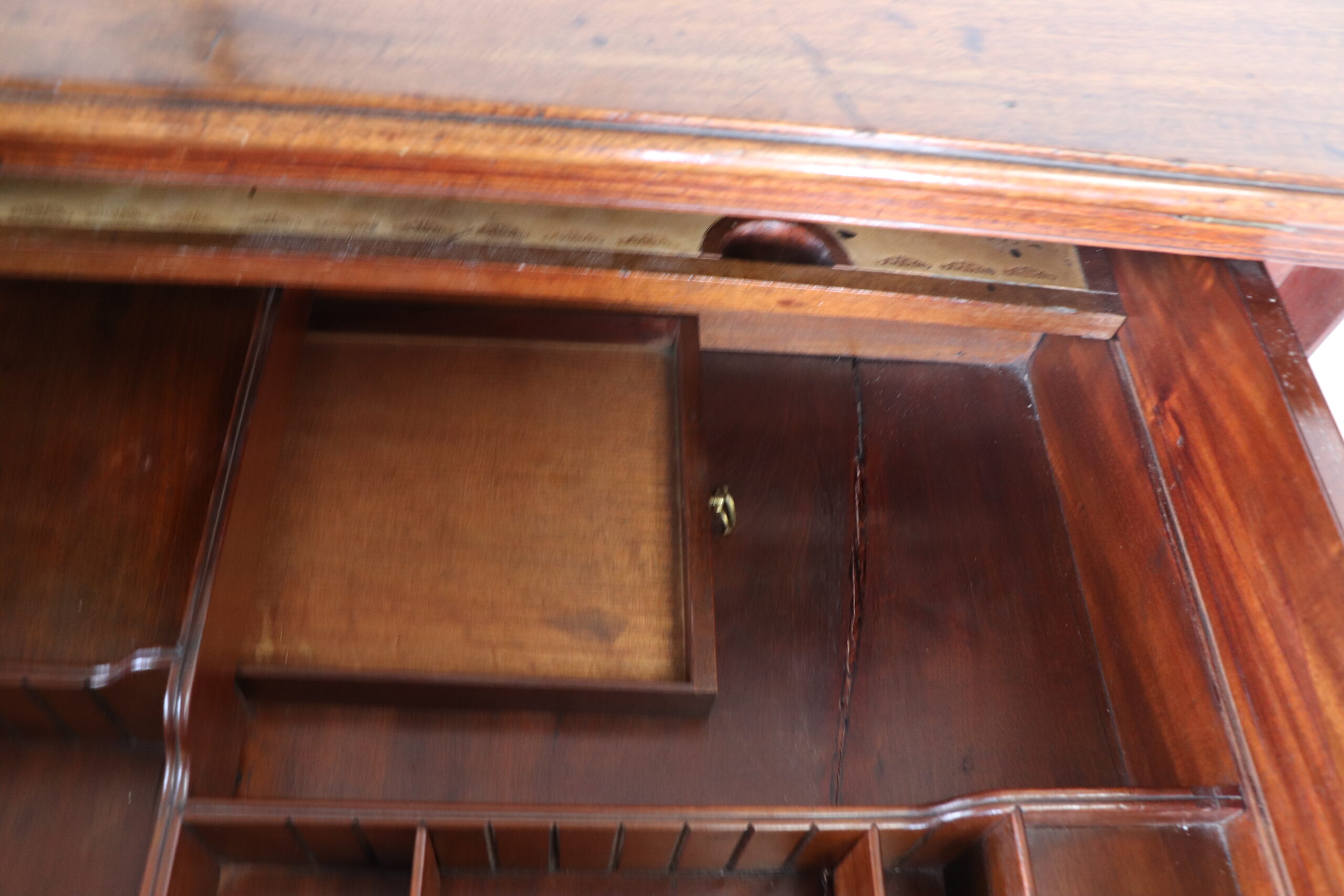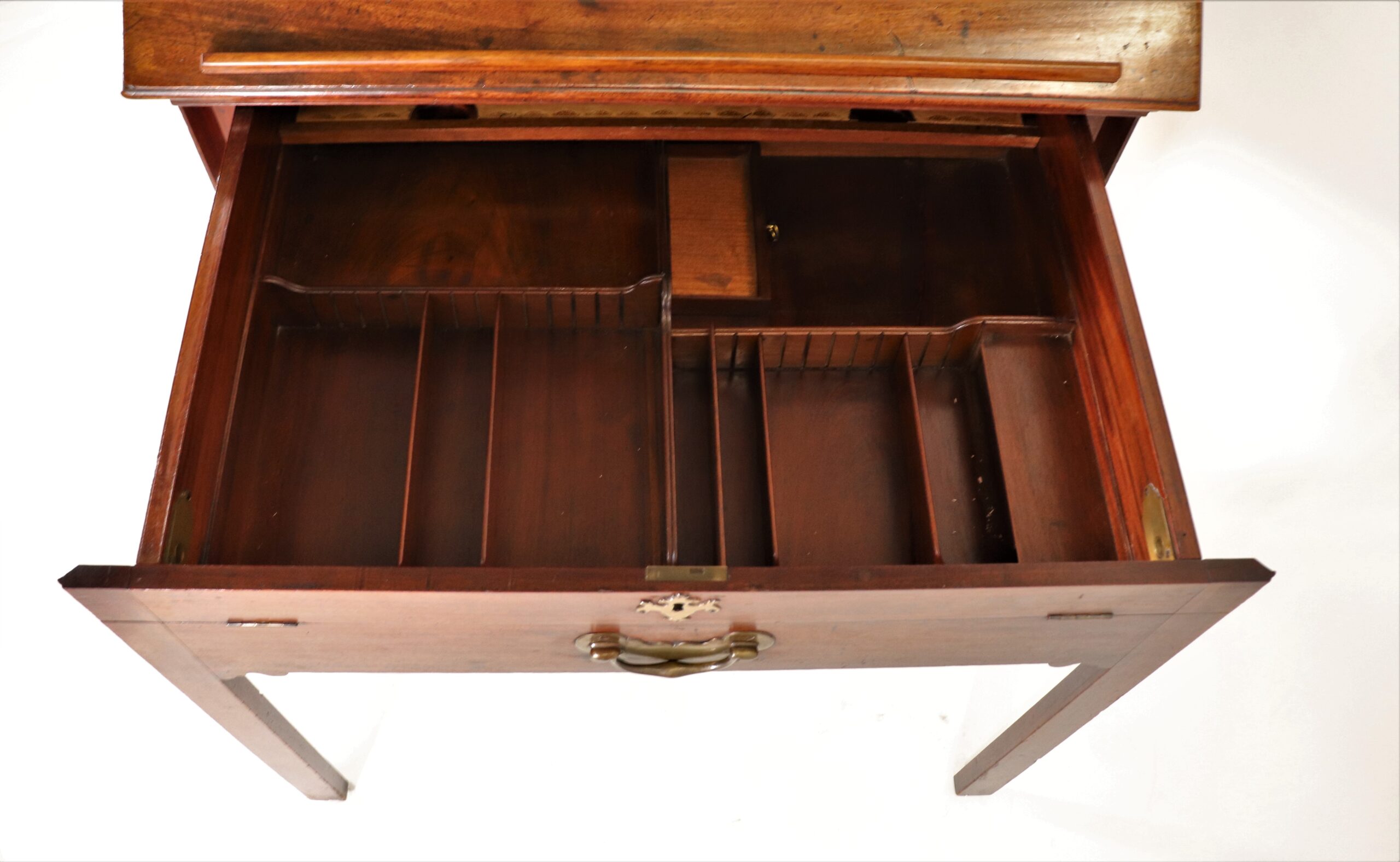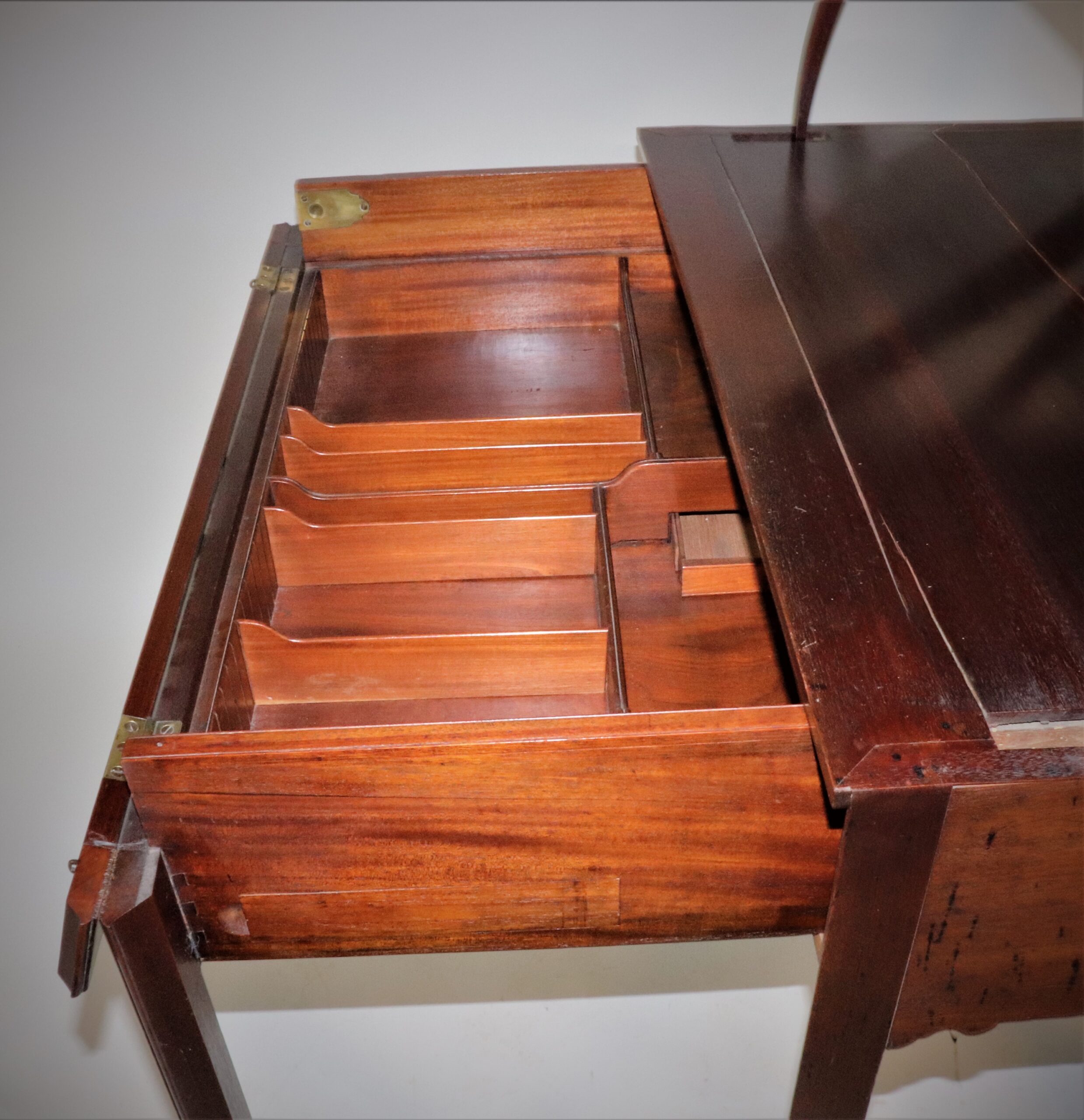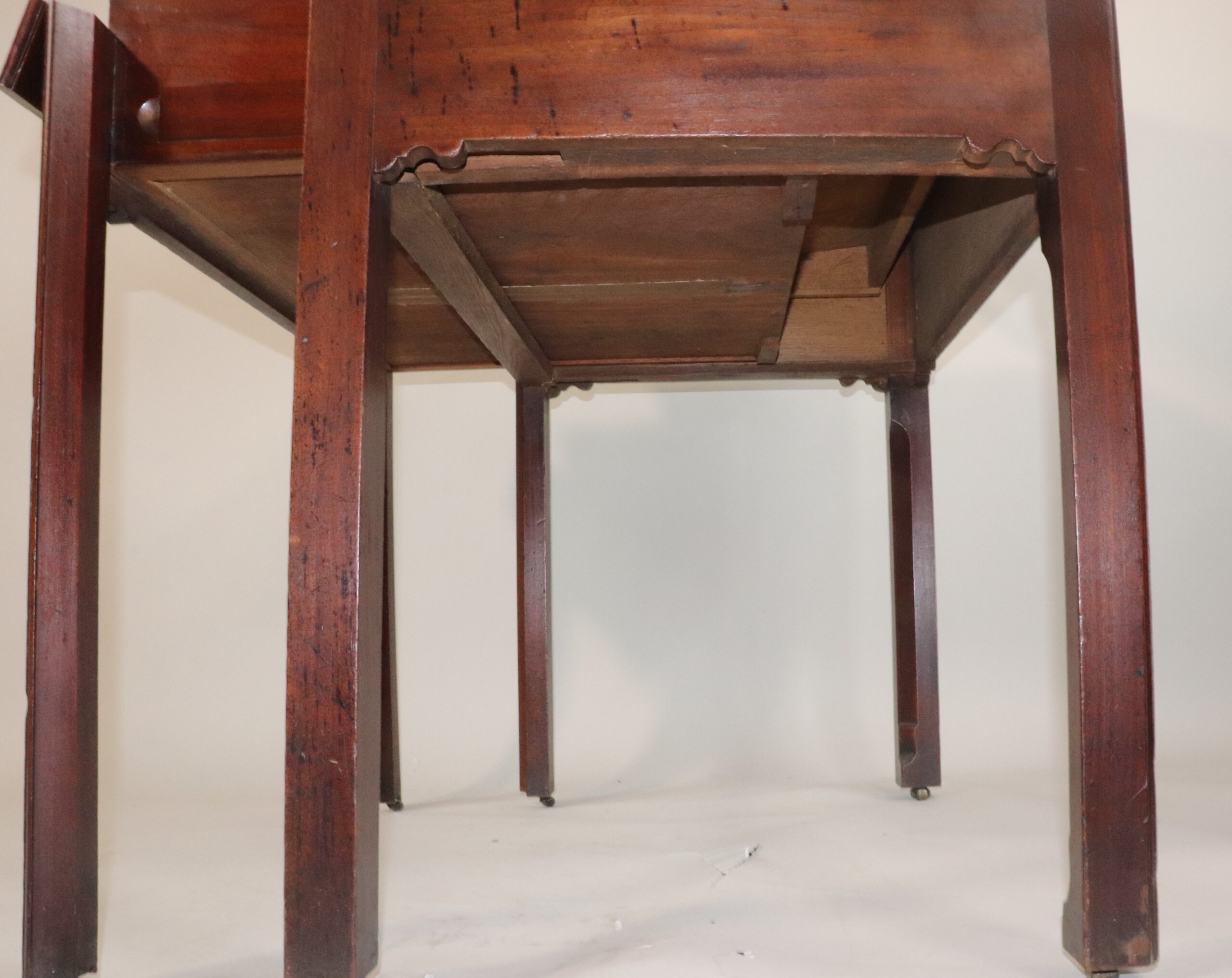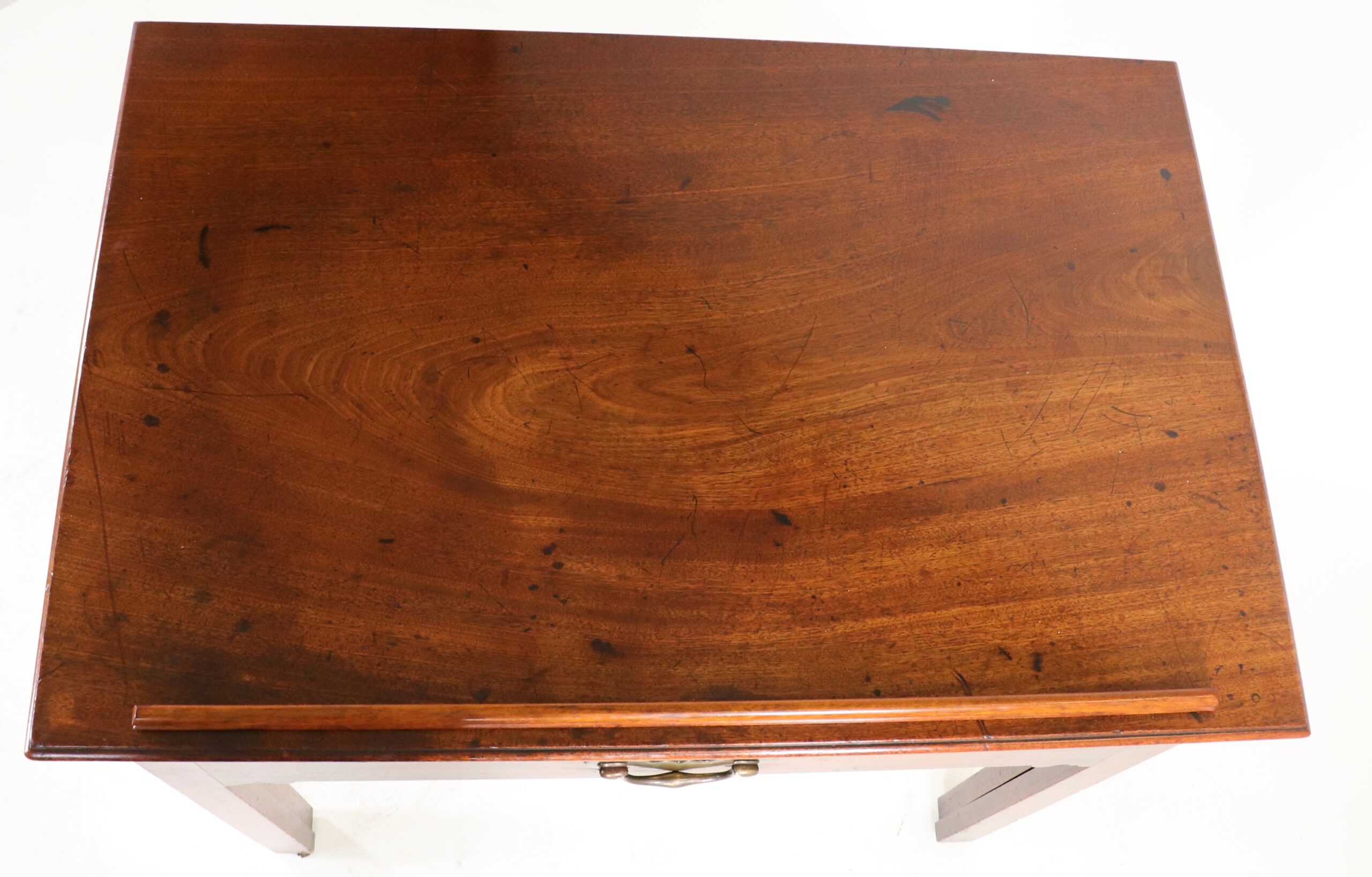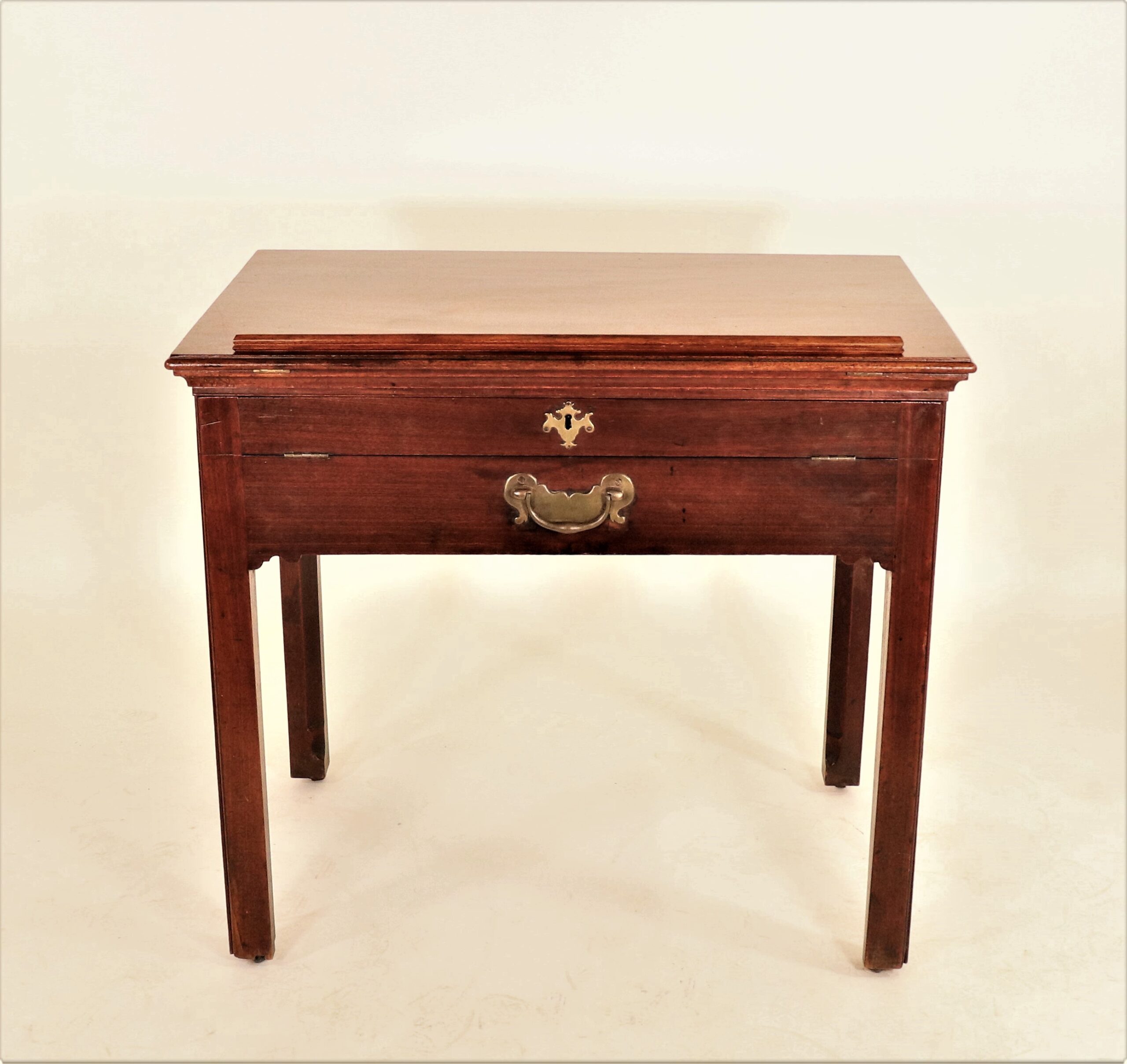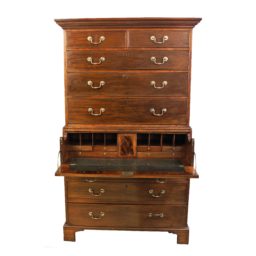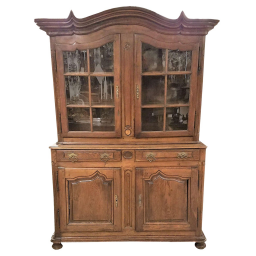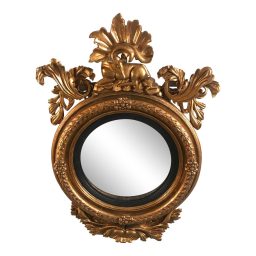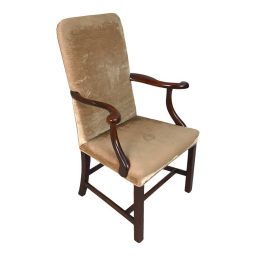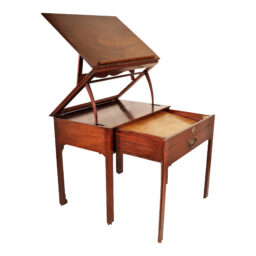Description
This rare and elegant Georgian Architect’s desk has a ratchet top, extending drawer front, as well as storage compartments. Architect desks, more commonly known now as drafting desks, were built for artists, architects, and engineers, serving as multipurpose desks. They typically feature an adjustable work surface that allowed the user to adjust to a more comfortable position with compartmental storage for utensils such as pens, pencils, rulers, and more.
During the Georgian era, there was an explosion of interest in classical architecture. The homes being designed were based on classical forms of the earlier Renaissance period, favoring symmetry, grandiosity, and uniform stonework. The buildings that were created were often on a larger scale. Architects required a larger working space to draft drawings and plans.
The ratchet top of the desk got the most use. The top lifts over hinges and can be angled while the gate drops into grooves along a track for support. This feature allows the user to stand or sit comfortably without bending over. The top has a horizontal support or lip going across near the edge to hold sheets of paper plans, blueprints, or working drawings. The entire top surface can be adjusted for tilt angle. As mentioned, there is an extending drawer front with an ornate brass pull and lock. Inside, there is a leathered sloped writing surface that when pushed back, reveals a sizable storage compartment.
During this period, leathered writing surfaces were common on desks since steel pens were easier to control on a softer surface. A user of this desk may have used the ratchet top for drafting sketches and the leathered surface for conducting more formal works. This storage area has removable walls that can be moved to make custom sizes in the compartment to fit all sizes of items. This would have been important since an architect would be working with various forms and sizes of paper. There are drawers in this compartment for more precious or valuable items. Another neat feature is a drawer on the front left side that rotates outward to give access to pens and ink. The desk sits on marlborough legs, which were typical of mid-18th Century English furniture.
Overall, this piece is simplistic in style but rich in history. It is that history and features that make this piece uncommon. Having been used by an enterprising architect of the mid-1700s makes it much more than just a desk. It is the perfect piece for a modern-day aspiring architect, an avid antique collector, or even a furniture lover. Wherever it is placed it will be sure to spark conversation and awe.
Open: Height= 49 in., Width= 30 in., Depth= 43 in. Open Drawer= 24 in.
Closed: Height= 34.5 in., Width= 38.5 in., Depth= 25.5 in. Leg clearance closed= 24 in.
Depth of Lip= 0.625 in. Width of Lip= 31 in.
Weight= 90 lbs.

